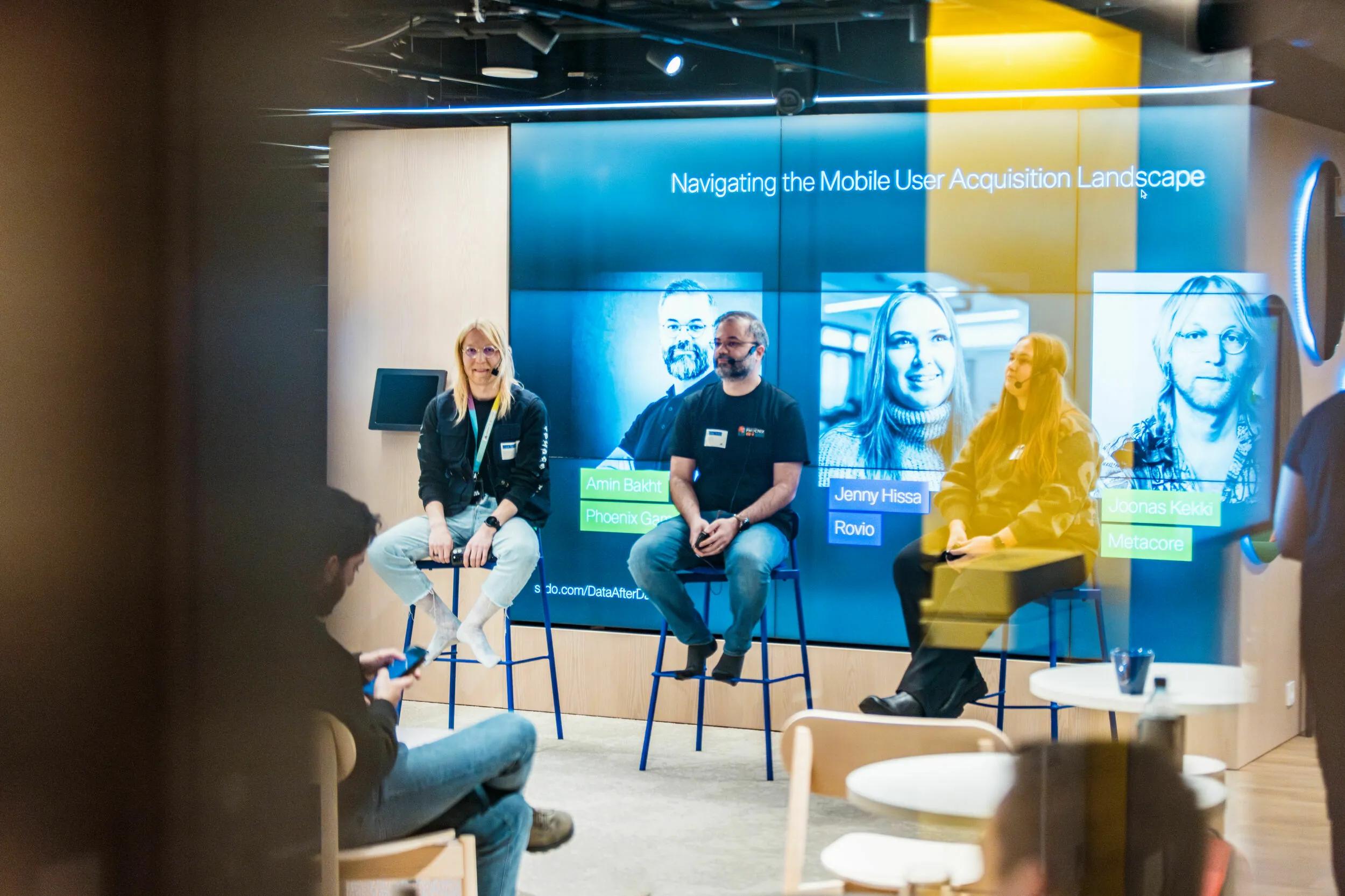
Utilizing Data in User Acquisition


Everyone who works with mobile games knows how much data there is to be leveraged – from players to marketing to competitors. But how to utilize it most effectively in user acquisition (UA)?
During our Core Talks: Data after Dark event we delved into all things UA with our Data Analyst Joonas Kekki, joined by great guest speakers Phoenix Games’ Head of UA Operations Amin Bakht, Rovio’s Lead Product Manager Jenny Hissa and Bandai Namco Mobile’s Marketing Data Scientist Frederick Ayala. Here are some of the best tips and insights our professionals shared!
Track your UA results through marketing data pipelines
When it comes to UA, game studios use data mainly for finding the best audiences for their games, reaching said audiences, and engaging them. The massive amounts of data available makes the job both easy and challenging at the same time: while data gives you an idea of what might work and what won’t, you also need other forms of feedback to validate your concepts for UA. So, before you commit to using just one formula in your UA strategy, try it out multiple times with your target audience to make sure it really works.
One way to validate and keep track of your UA data is to build your own marketing data pipeline, where you collect data, calculate and process it and then take it into action via either dashboards or UA scripts. To get started on this process, our experts recommend using tools like dbt, which can bring increased productivity, data lineage, error catching, documentation and constant monitoring through one tool.
Look into machine learning tools to help analyze complex data
How and when to modify UA budgets is no doubt an ongoing topic of debate – while the game team may think that a feature that has just been launched will turn new players into engaged users, UA managers might not be convinced that the time is right for an increase in budget. Data can bring a much needed external perspective to these debates and help avoid decision-making based simply on gut feeling.
Thanks to recent progress in optimization algorithms, nowadays it’s also possible to outsource the decision making process for a more impartial ruling and even quicker actions. In this scenario, an algorithm or tool could independently increase or decrease UA budgets based on signals coming from the audience, allowing UA managers to focus on the more strategic aspects of their work.
Use the data you continue to have access to after new privacy regulations
Even though Apple’s privacy-centric network, SKAdNetwork 5 or SKAN 5, isn’t fully enforced just yet, it’s causing a lot of questions on the future of UA. While UA is still leaning to the old ways of working, it’s impossible to ignore that it won’t work in the foreseeable future. Our experts’ advice for that? Embrace SKAN and attribute revenue to UA campaigns by using Conversion Values. It’s also a good idea to start learning about the upcoming Android Privacy Sandbox.
While revenue attribution still has room for error that wasn’t present when Apple allowed individual identifiers, that problem can be mitigated by, for example, estimating the recommended minimum number of installs per day and grouping players together based on spending. For more detailed advice on the topic, take a look at this research done by mobile game industry experts.
When it comes to Android Privacy Sandbox, we already know that it will be more lenient towards UA compared to SKAN. While certain aspects of privacy are increased, event-level reporting for optimizing ad campaigns and conversion information will still be available. What’s even better, tracking installs to campaigns will continue to work via Play Install Referrer as mentioned in the Android’s documentation.
Once more, with feeling
Data can be a UA manager's best friend, if used effectively. Our experts’ advice in a nutshell:
- Build your own marketing data pipeline to keep track of your data and use it until it becomes a second nature.
- Once your pipeline has been set up, examine how to attribute revenue using conversion values, and use other ML or AI models to analyze that data further.
- New privacy regulations will change the game a bit, but you can look into different ways of using the data Apple still provides, like revenue attribution, and get familiar with Android Privacy Sandbox.
Is data your core skill?
If you are fluent in data, take a look at our open positions in Data & Analytics both in Helsinki and Berlin.
Apply nowKeep an eye out for our future Core Talks events as well and join us when the next one comes along!
Related content

